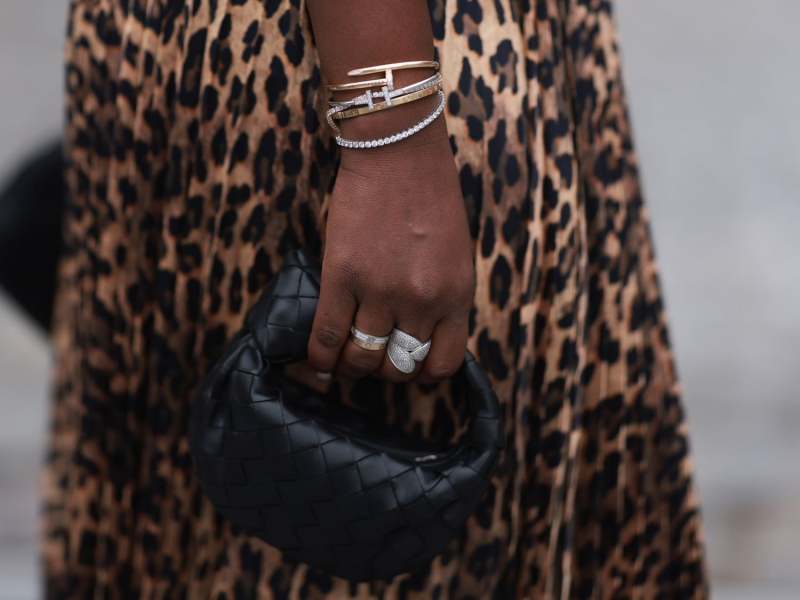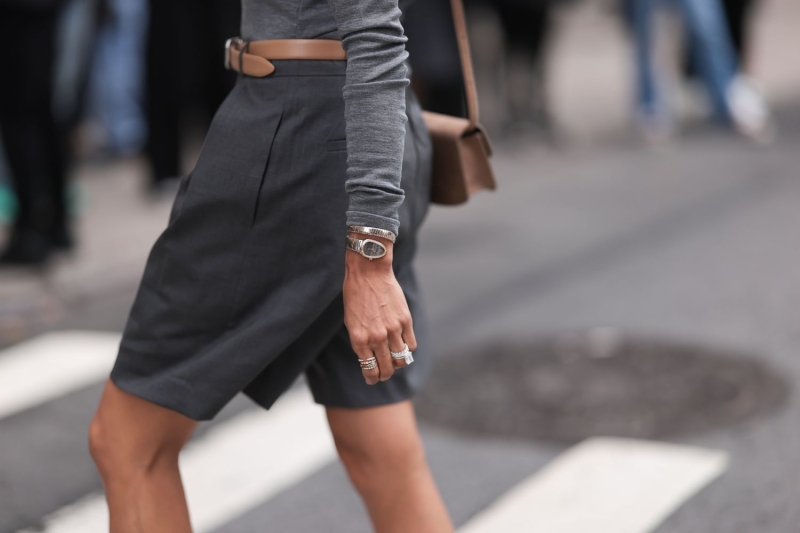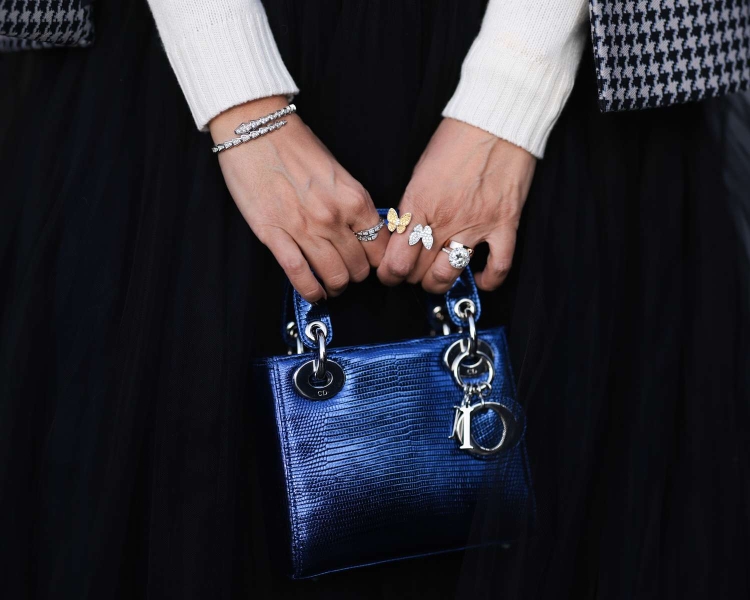Contents
'Till death do you (and your diamonds) part.
One of the key attributes of diamonds is how tough and durable they are (hence their popularity in engagement ring settings). So it might surprise you to learn that you have to take extra steps to preserve your best jewelry pieces and keep them looking like new.
“While diamonds are the hardest, most durable material on earth, they can still be damaged and require regular care and maintenance to keep them looking their best,” says Rebecca Boyajian-Pecnik, a gemologist and director of market development at the Gemological Institute of America (GIA). “By gently cleaning and caring for diamonds, they can keep their sparkle for decades, even centuries to come. Additionally, by gently cleaning and storing jewelry pieces, the diamond and jewelry settings can last longer, reducing the need for frequent repairs or expensive diamond replacements.”
For every single way you can keep your diamonds looking perfectly polished, read on.
Why You Should Clean Your Diamonds

Diamonds are vulnerable to dirt, oil, and residue, which, even if you’re taking good care of your jewelry, can cause buildup over time and with regular wear. “Diamonds collect oil and dirt easily. When handling a diamond, the natural oils from your fingers stick to the diamond’s surface, which dulls its sparkle and shine,” explains Boyajian-Pecnik. Also, contrary to popular belief that diamonds are virtually indestructible, “diamonds can chip or fracture if struck at the right angle,” says Olivia Landau, GIA-certified gemologist and founder of The Clear Cut. If you want your diamonds to remain pristine and clean, in other words, they deserve some extra attention.
How to Clean Your Diamond Jewelry

Step One: Make a Cleaning Solution
Fortunately, it’s incredibly easy to clean your diamonds gently and regularly. So much so that you can take care of them at home. Boyajian-Pecnik recommends you start by putting your diamond jewelry in a small bowl with warm water and a few drops of mild dish soap. Then, let it soak for 15 minutes. Akshie Jhaveri, founder of Grown Brilliance, also adds that you can opt for sulfate-free shampoo instead.
Step Two: Gently Scrub
Boyajian-Pecnik recommends you "remove the diamond from the cleaning solution and use a soft, clean toothbrush to gently remove any remaining dirt and oil." She emphasizes that the toothbrush should be new and used only for cleaning jewelry. "The bristles of the toothbrush are perfect for reaching tight nooks and crannies, such as the back of the diamond, which collects the most dirt and oil. Fragile settings, such as older prongs in antique jewelry or a tension setting, should be washed gently, so try not to scrub too vigorously," she adds.
Step Three: Soak and Dry
Jhaveri says the next step is to soak the jewelry in fresh warm water without any soap. "Use your fingers to lightly rub the jewelry in the water, helping release any remaining dirt or soap," she says. Finally, just dry the jewelry with a soft, lint-free cloth. Don't use anything that might contain rough, scratchy fibers.
Protecting Your Pieces from Damage

You can repeat the above process regularly, depending on how dirty your jewelry gets. “We recommend gently cleaning diamond jewelry once or twice a week to keep it looking like new,” says Boyajian-Pecnik. I’ll get into this in a minute, but a professor jeweler will also be quite helpful here, including for “a professional treatment, which I often recommend if you have a big event coming up,” says Landau.
You don’t want to use stronger cleaners or more corrosive chemicals in the cleaning process, including strong cleaning products, toothpaste, or chlorine. Justine Lançon, chief creative officer at Mejuri, also recommends you “avoid using steam or ultrasonic cleaners, as these can cause damage to the stone.”
Aside from cleaning, there's a lot you can do to keep your gems damage-free. First, you'll want to handle them mindfully and "sparingly, touching the setting when needed, rather than the diamond itself," says Boyajian-Pecnik. Landau adds that you should "always use a soft, lint-free cloth or gloves when handling delicate pieces to avoid fingerprints or accidental scratches." Pay attention to when and how you handle your pieces as a part of your daily routine, too. "In the morning, I put my jewelry on after applying creams, makeup, and lotions," says Jhaveri. These products (along with other household goods) can contain damaging chemicals that might fill its luster. Jhaveri adds that she usually removes all her jewelry as soon as she gets home for the same reason.
Along the same line, you'll want to keep your diamonds away from harsh chemicals, heat, and other abrasives as you wear them. "Extreme temperatures can cause metals to expand or contract," notes Landau. Adds Boyajian-Pecnik, "Avoid wearing diamond jewelry when exposed to hot or cold temperatures, such as when in hot tubs, saunas, steam rooms, snow sports, and even cooking." You'd be surprised by how often your jewelry is exposed to potential damage during the day. "Protect your diamonds from physical damage by avoiding wearing them during heavy physical activities, like gardening, working out, or moving heavy objects, as they can get scratched or loosened," says Landau, noting that even a chlorinated pool might cause damage.
Finally, you'll want to store your jewelry correctly, "in a consistent, moderate environment," says Landau; if possible, you'll want to "invest in anti-tarnish strips or silica gel packets to maintain a dry storage environment." This area shouldn't have any exposure to sudden temperature changes; in particular, "avoid storing diamond jewelry in hot, sunlit areas, such as near heaters or windows," Boyajian-Pecnik adds. You'll want to make use of jewelry bags or other soft pouches. "While diamonds are difficult to crack or chip, they can be damaged through friction with other diamonds. Rather than keeping jewelry in a drawer which can lead to damage (not to mention tangles), it is best to store them in a jewelry box, ideally with separate compartments for necklaces, bracelets, rings, and earrings," notes Boyajian-Pecnik.
Extra Care for Your Fine Jewelry

When it comes to your fine jewelry, which includes your engagement and wedding rings, you'll want to go above and beyond to take care of them. Firstly, get insurance for your pieces. "For high-value jewelry, this is particularly important. Many insurance companies will require an appraisal to determine the replacement value of the jewelry," says Boyajian-Pecnik. Adds Landau, "Jewelry insurance can protect you against loss, damage, theft, or mysterious disappearance. You can usually use the insurance appraisal provided by your jeweler to get a quote from an insurer."
Secondly, for any new pieces, think carefully about the jewelry setting you choose as some are more secure than others. "For example, the bezel setting, in which a diamond is encased in a continuous metal rim, offers excellent protection from damage and, because the metal fully surrounds the stone, it is much harder for the stone to fall out," says Boyajian-Pecnik. "Channel, bar, and flush settings are also extremely secure, holding diamonds tightly in place and preventing loosening or chips. On the other hand, prong settings, while popular, are less secure as they can bend and break over time. Invisible settings, in which stones are set without visible metal, are also less durable and diamonds are prone to falling out or shifting."
Speaking of regular maintenance, make sure you have your jewelry settings checked every six months to a year. “Professional inspections help prevent significant jewelry damage, such as loose stones, bent clasps, prongs, or bezels, and scratches,” says Boyajian-Pecnik. While you’re there, ask to have the pieces cleaned, she recommends. “Regular inspections keep jewelry in pristine condition for much longer. They can even keep antique pieces looking immaculate, centuries after they were made. Regular inspections also save costs in the long run by reducing the need for expensive repairs.” If you’re worried about the expense, she says: “Many jewelry stores offer free check-ups and professional cleaning at scheduled intervals,” she says, adding that “consumers can also use GIA’s Retailer Lookup to find a local jeweler in their area with GIA-trained associates on staff.”

